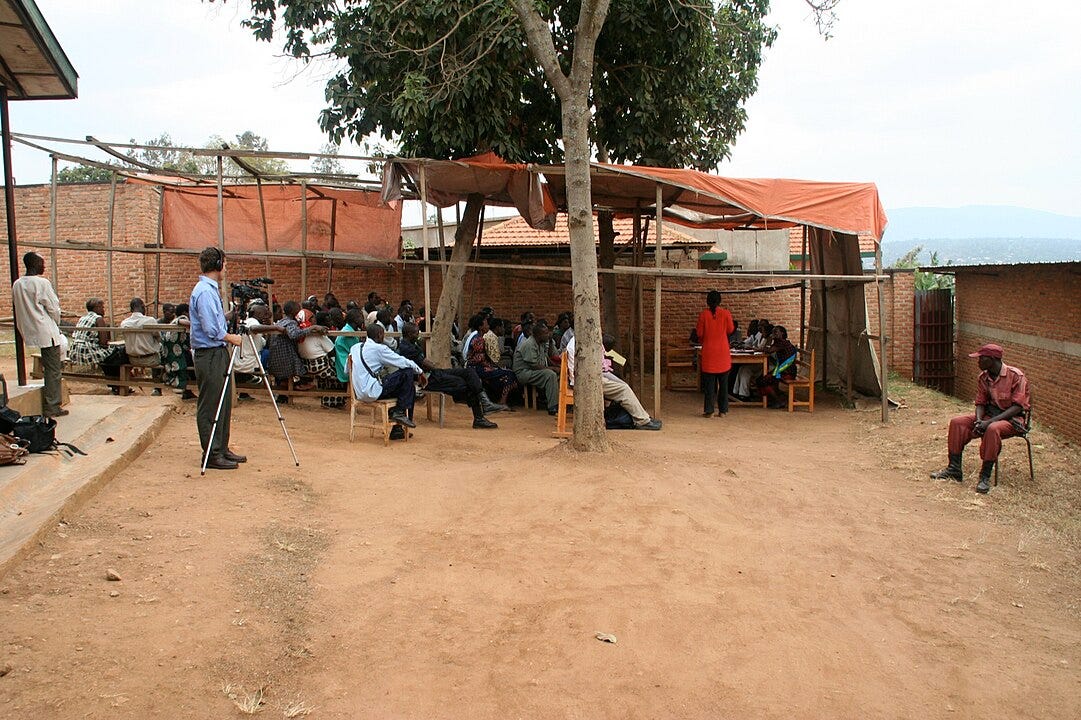Nobody quite knows what started the killing.
Sure, you can track it down to the specific spark that lit the rampaging wildfire — in this case, the killing of President Habyarimana on April 6, 1994 — but how the kindling got there in the first place, or why nobody stepped in to snuff out the flame as soon as it flickered to life, is a mystery.
Rwanda was a Belgian colony that had only recently become its own country. At the time, the country’s population was fast approaching 8 million.
It was a population splintered (as many populations are) by races that spoke the same language and shared the same culture. In the early 1990s, politics employed racial language — the president was a Hutu, and he used that fact to consolidate his popularity among his fellow Hutus who happened to make up the majority of the country — but daily life did not. Hutus lived next to Tutsis. They were friends, spouses, godparents, and godchildren. Then the madness took over.

It all started within hours of the President Habyarimana’s plane going down, and among the first victims were 10 Belgian peacekeepers. That, it turned out, was key. The United Nations had no interest in keeping personel in Rwanda if they were just going to get killed, so it left the Rwandans to themselves.
By April 7, 1994, genocide was the business of the entire nation. Hutus murdered Tutsis indescrimantly whether they found them in churches or caught them fleeing past the border to escape the machettes of their neighbors. Over the course of 100 days, anywhere between a half a million and one million Rwandans were murdered by neighbors and friends who seemed to have simply gone mad, and who remained that way until rebel forces managed to unseat the government and restore some modicome of sanity in early July.
In retrospect, it’s easy to conclude that the international community — the UN and the journalists who failed to tell the story to nations who should have stepped in — is, at least partially, at fault. Obviously, the men and women doing the killing bear the brunt of the blame for their actions, but national madness can’t infect a nation unless it’s allowed to do so. The UN later admitted that a mere 5,000 troops could probably have doused the flame of genocide even before it flickered to life. Then again, playing the “what-if” game with history is always very tricky.
The problem was simply that normally loving and reasonable individuals went starkly mad over night. Sin — even the most evil and hienous of sins — isn’t generally committed by monsters; any one of us is capable of it.




Hello: Just a quick point in reponse to this interesting article. First, the genocide was planned in advance of the killing of President Habyarimana. The Hutus had their weapons hidden and ready. The downing of his plane was probably planned at the starting point. Second, there were UN Peacekeepers there who had been sent to enforce an earlier ceasefire. There were insufficient numbers. They were supported by a number of Belgian troops (the wrong choice for the job considering Belgium's history in the region) who abandoned the country after the murder of the 10 Belgian soldiers. Third, UN General in charge, (Gen. Romeo Dallaire) was aware of the hidden Hutu weapons and had his peacekeepers ready to sieze them before the genocide could begin. But he made a mistake, in my opinion. He honoured the chain of command and informed his superiors at the UN the night before he was to take action. His UN bosses, including later Sec. Gen. Kofi Annan orderd him to stand down and inform the Hutus that he was aware of their plans. The idea, supposedly, was to keep the UN neutral as between the sides. But the Hutus simply moved their weapons and shortly afterwards commenced the genocide. And, as you say, the country went "mad". Gen. Dallaire has written an absolutely riveting book about this horror called "Shake Hands With The Devil" (when he met the Hutu leaders he felt he saw, in their eyes, the devil). I recommend this book to everyone. Thank you for this article.